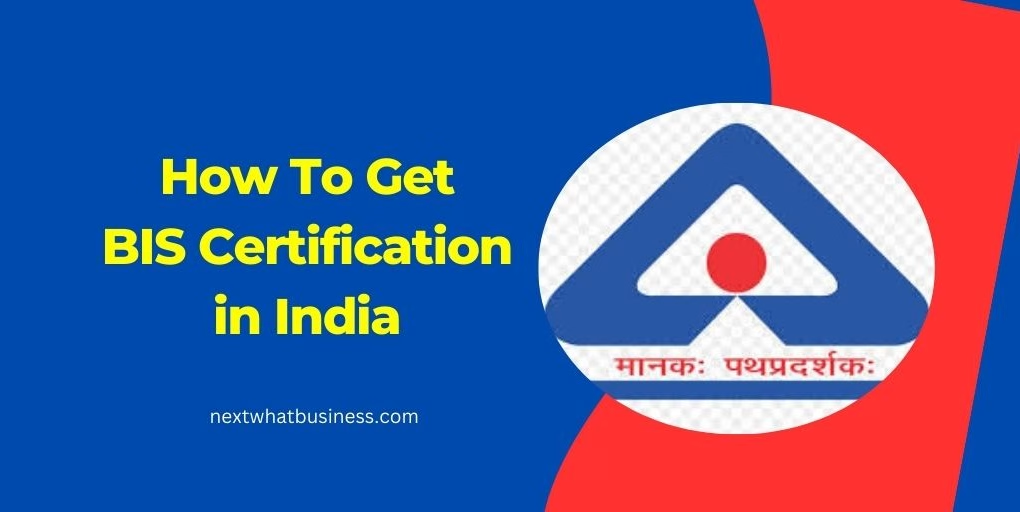Do you want to get your products or services trademarked in India? If so, find here a detailed guide on the steps to follow to apply for trademark registration in India covering the application process, costs, fees, documents required, and more.
Table of Contents
What Is a Trademark—and What Can You Register?
A trademark is a mark of identity—it identifies the source of goods or services and distinguishes them from others. In India, trademarks include:
- Words (brand names, taglines)
- Logos and stylised text
- Shapes (unique bottle or packaging shapes)
- Colours, sounds, and even scents (in rare cases)
You can’t trademark generic or purely descriptive terms like “Fresh Juice” in Class 30. Nor can you use offensive terms, appellations of origin or state names without distinction.
Pro Tip: Make your trademark distinctive, not descriptive—for instance, “ButterLab” is protectable; “Fresh Dosa” is not.
The Benefits of Registered Trademarks
Exclusive ownership and legal protection: Once registered, you can initiate infringement suits and claim statutory damages.
- Brand recognition and trust: “®” shows professionalism to clients and investors.
- Intangible asset: Registrations can be licensed, franchised, sold, or used for fundraising.
- Online protection: Helps prevent domain impersonation, app name misuse, or copycat social profiles.
Types of Trademark Applications in India
Depending on your legal status, you apply as:
- Sole proprietor
- Partnership firm (now rare) or LLP/company
- Startup India entity (eligible for fee waiver)
- Trust/NGO
You can file directly via Form TM-A. If updating a registered mark (like logo modification), use TM-M. It’s smart to register a name that reflects your long‑term brand structure (e.g. company rather than owner’s name).
Trademark Classes & Wise Selection
India has 45 trademark classes. Choosing incorrectly is one of the most common mistakes, sometimes leading to rejection.
- Class 9: Software, apps, electronic goods
- Class 25: Apparel, fashion
- Class 30: Food products
- Class 41: Training & coaching services
- Class 42: Software, development, cloud services
Coach tip: Always file in the class most directly related to your core business first, then expand later if required. Filing in too many classes at once inflates cost and complexity.
Trademark Search: Due Diligence Is Key
Before filing, you must ensure no identical or confusingly similar mark is already registered or pending.
- Go to the IP India Trademark search portal
- Search for exact name and phonetic variations
- Analyze logos for visual similarity
- Document your search screenshots—these can help if contested later
Remember: just because Google doesn’t bring up a competitor doesn’t mean their trademark doesn’t exist.
Who Regulates Trademark Registration in India?
Trademark Registration in India is regulated by the Controller General of Patents Designs and Trademarks, Ministry of Commerce and Industry, Government of India. At present, Trademarks are registered under the Trademark Act of 1999. Basically, it provides the trademark owner the right to sue for damages when infringements of trademarks occur.
Documents Required for Trademark Registration
At the time of applying for a Trademark, you must submit a copy of the trademark to be registered along with the address and identity proof of the trademark owner. In the case of the Company, you must submit the name of the Company along with its Certificate of Incorporation and Address proof.
Find below the documents needed to apply for the Trademark:
- A soft copy of the letterhead with the logo in JPEG format.
- PAN Card.
- Address Proof of the owner applying for a Trademark.
- Certificate of Incorporation ( In case of a Private Limited Company or an LLP)
- Udyog Aadhar Registration
- Address Proof
- Logo if Required
What Does Trademark Registration Contain?
Currently maintained in an electronic form, the trademark contains the following:
- The class and goods/services in respect of which it is registered, including particulars affecting the scope of registration of rights conferred or disclaimers.
- Address of the proprietors.
- Particulars of trade or other description of the proprietor.
- The convention application date (if applicable).
- The place where a trademark has been registered with the consent of the proprietor of an earlier mark or earlier rights.
Trademark Registration Application Process in India
Registering a trademark in India isn’t rocket science, but it isn’t a cakewalk either, especially if you’re a bootstrapped founder or small business owner. Here’s a step-by-step guide you can follow, plus some insider tips you won’t get from the official handbook.
Step 1: Do a Trademark Availability Search
Before filing anything, you must ensure your brand name or logo is not already taken or deceptively similar to another registered mark.
How to do it:
- Visit IP India Public Search.
- Select the relevant class (based on your product/service).
- Search your proposed name, and variations with phonetic match ticked (e.g., “QwikPay” vs “QuickPay”).
- Check for logos with similar elements if you’re registering a device mark.
Step 2: Finalise the Trademark and Relevant Classes
Once you confirm availability, pin down:
- Whether you’re registering a word mark, logo, or both.
- The class or classes under which you’ll file.
India follows the Nice Classification system (Classes 1–45). Here are some relevant examples:
| Industry | Trademark Class |
| Software / Apps | 9, 42 |
| Food / F&B | 29, 30, 43 |
| Coaching / Edtech | 41 |
| Clothing / D2C Apparel | 25 |
| E-commerce / Marketplace | 35 |
Step 3: Prepare Documents
Here’s what you’ll need:
- Applicant’s name and address (individual/company / LLP).
- Brand name/logo in .jpg or .png format (preferably transparent).
- Nature of goods/services (specific description).
- Signed TM-48 (a power of attorney authorising your agent to file).
- MSME or Startup India Certificate (if applicable, for discounted fees).
Step 4: File Trademark Application (Form TM-A)
You can apply:
- Online via the IP India website (preferred).
- Through a registered trademark attorney or agent.
Application includes:
- Applicant type
- Class/es
- Description of goods/services
- Trademark representation
- Priority claim (if any)
- Fees (₹4,500 for individuals/startups per class; ₹9,000 for others)
After submission, you’ll receive:
- Acknowledgement slip
- Trademark application number
Now you can start using “™” next to your brand name.
Step 5: Examination by Trademark Office
Within 2–3 months, the Registrar examines your application and may issue a report.
There are 3 outcomes:
- Accepted for publication (ideal).
- Objection raised under Section 9 (descriptive) or 11 (conflict).
- Conditional acceptance (requires minor clarifications).
Step 6: Respond to Examination Report (If Any)
You’ll have 30 days to respond.
- Submit a written reply arguing why your mark is distinctive or non-conflicting.
- Attach usage proofs if applicable (website, invoices, social handles).
- Request a hearing if necessary.
Step 7: Publication in Trademark Journal
If accepted, your application is published in the Trademark Journal, available weekly on the IP India website.
This opens a 4-month window where third parties can oppose your mark if they feel it infringes on theirs.
Step 8: Handling Opposition (If Any)
If someone files an opposition:
- You’ll receive a notice of opposition.
- You must file a counterstatement within 2 months.
- A legal process follows with evidence, rejoinders, and (possibly) a hearing.
- You may either fight it out or negotiate a co-existence agreement.
Step 9: Certificate of Registration
If no opposition is received (or it’s resolved in your favour), your trademark proceeds to registration.
You receive:
- An official Registration Certificate from the Registrar
- The right to use the ® symbol
- A validity period of 10 years, renewable indefinitely
Registered trademarks are valid for 10 years in India from the date of filing. Prior to the end of the validity, the trademark owner can file for renewal to keep the trademark registration current.
Related: How To Get a Patent In India
Online Trademark Registration in India
You can also apply for Trademark Registration electronically. Through E-filing you will get the following facilities immediately:
- Receive a trademark application number
- Online verification to assure error-free filing and obtain your filing date
- Speed up the registration process
- Print the completed application data and receive fee acknowledgment
- Save the data locally on your PC
- Be able to recall your contact details for subsequent applications
- You can also view the online history and status of the applications filed by clicking “Status of Filed Application” and the online status of e-Payments.
Cost of Trademark Registration in India
The government fee for the new Trademark Registration application for individuals through e-filing is Rupees 4,500 and Rs. 5000 for physical filing. Whereas if you are applying for a trademark on behalf of a company the government fee is Rs. 9000 for e-filing and Rs. 10000 for physical filing.
For the Renewal of a registered trademark, the government fee stands at Rs. Rs. 10,000 per class for physical filing and Rs. 9000 through e-filing.
Objection vs Opposition: Know the Difference
- Objection: Raised by the Office (examiner); relates to law or procedure.
- Opposition: Raised by a competitor or third party; relates to conflict with their mark.
- Procedure differs: objections are within your control, oppositions require legal arguments and sometimes hearings.
Do You Need a Trademark Attorney?
For small businesses:
- Simple applications (word mark in one class): you can DIY comfortably.
- If there’s an objection or opposition: having a professional respond improves success substantially.
Hiring an attorney upfront often costs ₹3k–₹6k per class and saves weeks or months of delays.
Using ™ and ® Correctly
- Use “™” while your application is pending (after filing)
- Use “®” only after the trademark is officially registered
Misuse can expose you to legal liability, so ensure certifications align with your status.
Dealing with Trademark Infringement
If someone uses your registered trademark:
- Send a cease & desist letter (legal template helps)
- If ignored, follow through with civil suit for damages or injunction
- Some cases can escalate to criminal infringement (rare)
Compliance insight: Keep usage proofs, invoices, and screenshots—they matter during disputes.
Special Considerations for Online & Startup Businesses
For D2C brands, apps, SaaS, and coaches:
- Register trademarks for brand name, logo, tagline, domain name
- Enforce digital brand protection—on domains, social media handles, UPI IDs etc.
- File early—even before you fully launch—to lock in your name
Global Trademark Protection via Madrid Protocol
Thinking beyond India?
- India joined the Madrid System in 2013. One mail-out registration process covers multiple countries.
- Ideal if you plan to export your brand or raise international VC
Pro tip: Start with India, then file for extension within 6 months if needed.
FAQs (Client‑Ready Format)
- Trademark vs Copyright? Trademark protects brand identity; copyright protects content/art.
- Registering before business launch? Yes—it secures your identity early.
- Is Indian registration valid globally? No—file Madrid or each country separately.
- Can trademarks be sold or licensed? Yes—they are assignable assets.
- Transfer of ownership? Use Form TM-P with documentation.
Common Rejection Reasons & How to Avoid Them
- Marks that are descriptive or generic
- Visually or phonetically similar existing trademarks
- Improper classification or specification
- Failure to respond to objections in time
- Misuse of ™ or ® symbols before registration
Expert tip: If you get an objection, don’t panic. Most are procedural and can be overcome with an amendment or hearing.

NextWhatBusiness Research Desk represents the editorial research team at NextWhatBusiness, comprising business consultants and industry analysts with experience across small, medium, and franchise-led enterprises. The team focuses on data-backed insights, market research, and structured business information to help readers understand trends, opportunities, and operational realities across industries.
Editorial oversight provided by Rupak Chakrabarty, Editor, NextWhatBusiness.



